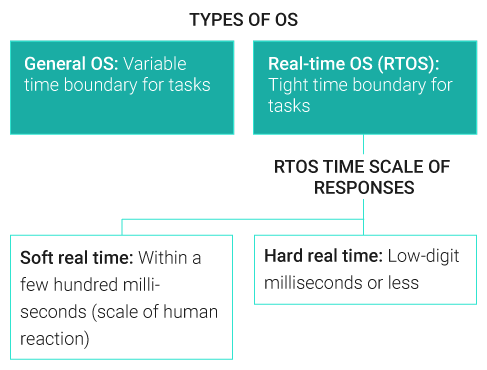Wind River Partner Program
Wind River
Partner Ecosystem
Wind River partners with more than 250 leading companies to help our mutual customers ease integration, speed development, and enhance functionality in their intelligent systems.

Find a Partner
Search for semiconductor manufacturers, system integrators, and other companies that partner with Wind River to help your intelligent system succeed.
Become a Partner
Work with us to integrate, validate, and jointly market your products that support Wind River software.
Log into the Partner Portal
Already a partner? Log in to our Partner Portal for access to exclusive resources.
RTOS as Basic Page
Real-Time Operating Systems
an Introduction
What Is an RTOS and How Does It Work?
A real-time operating system (RTOS) is an operating system with two key features: predictability and determinism. In an RTOS, repeated tasks are performed within a tight time boundary, while in a general-purpose operating system, this is not necessarily so. Predictability and determinism, in this case, go hand in hand: We know how long a task will take, and that it will always produce the same result.
RTOSes are subdivided into “soft” real-time and “hard” real- time systems. Soft real-time systems operate within a few hundred milliseconds, at the scale of a human reaction. Hard real-time systems, however, provide responses that are predictable within tens of milliseconds or less.

RTOS VS. OS
An RTOS is a type of operating system, but it is vastly different from the kind most consumers are familiar with. Operating systems in phones or personal computers are, comparatively, bloated with apps and features; they must be able to support anything the user might want to do today. An RTOS, on the other hand, is streamlined, meant to execute its tasks quickly and effectively. It is a fraction of the size, sometimes only a few megabytes (vs. more than 20 gigabytes), with a simple graphical interface, and it lacks many familiar features, such as a web browser.
Real-Time System Characteristics
5 CHARACTERISTICS OF AN RTOS
- Determinism: Repeating an input will result in the same output.
- High performance: RTOS systems are fast and responsive, often executing actions within a small fraction of the time needed by a general OS.
- Safety and security: RTOSes are frequently used in critical systems when failures can have catastrophic consequences, such as robotics or flight controllers. To protect those around them, they must have higher security standards and more reliable safety features.
- Priority-based scheduling: Priority scheduling means that actions assigned a high priority are executed first, and those with lower priority come after. This means that an RTOS will always execute the most important task.
- Small footprint: Versus their hefty general OS counterparts, RTOSes weigh in at just a fraction of the size. For example, Windows 10, with post-install updates, takes up approximately 20 GB. VxWorks®, on the other hand, is approximately 20,000 times smaller, measured in the low single-digit megabytes.

